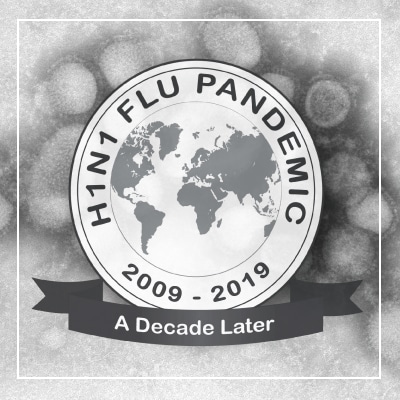Pandemic Intervals Framework (PIF)
The Pandemic Intervals Framework (PIF) describes the progression of an influenza pandemic using six intervals. This framework is used to guide influenza pandemic planning and provides recommendations for risk assessment, decision-making, and action in the United States. These intervals provide a common method to describe pandemic activity which can inform public health actions. The duration of each pandemic interval might vary depending on the characteristics of the virus and the public health response.
Description of the Six Pandemic Intervals
Interval
Description
Interval
1) Investigation of cases of novel influenza A virus infection in humans
Description
When novel influenza A viruses are identified in people, public health actions focus on targeted monitoring and investigation. This can trigger a risk assessment of that virus with the Influenza Risk Assessment Tool (IRAT), which is used to evaluate if the virus has the potential to cause a pandemic.
Interval
2) Recognition of increased potential for ongoing transmission of a novel influenza A virus
Description
When increasing numbers of human cases of novel influenza A illness are identified and the virus has the potential to spread from person-to-person, public health actions focus on control of the outbreak, including treatment of sick persons.
Interval
3) Initiation of a pandemic wave
Description
A pandemic occurs when people are easily infected with a novel influenza A virus that has the ability to spread in a sustained manner from person-to-person.
Interval
4) Acceleration of a pandemic wave
Description
The acceleration (or “speeding up”) is the upward epidemiological curve as the new virus infects susceptible people. Public health actions at this time may focus on the use of appropriate non-pharmaceutical interventions in the community (e.g. school and child-care facility closures, social distancing), as well the use of medications (e.g. antivirals) and vaccines, if available. These actions combined can reduce the spread of the disease, and prevent illness or death.
Interval
5) Deceleration of a pandemic wave
Description
The deceleration (or “slowing down”) happens when pandemic influenza cases consistently decrease in the United States. Public health actions include continued vaccination, monitoring of pandemic influenza A virus circulation and illness, and reducing the use of non-pharmaceutical interventions in the community (e.g. school closures).
Interval
6) Preparation for future pandemic waves
Description
When pandemic influenza has subsided, public health actions include continued monitoring of pandemic influenza A virus activity and preparing for potential additional waves of infection. It is possible that a 2nd pandemic wave could have higher severity than the initial wave. An influenza pandemic is declared ended when enough data shows that the influenza virus, worldwide, is similar to a seasonal influenza virus in how it spreads and the severity of the illness it can cause.
Figure 1. Preparedness and response framework for novel influenza A virus pandemics: CDC intervals

In addition to describing the progression of a pandemic, certain indicators and assessments are used to define when one interval moves into another. CDC uses two tools (the Influenza Risk Assessment Tool and the Pandemic Severity Assessment Framework) to evaluate the pandemic risk that a new influenza A virus can pose. The results from both of these assessments are used to guide federal, state and local public health decisions.
Please refer to the “Updated Preparedness and Response Framework for Influenza Pandemics” for more information about the Pandemic Intervals Framework and how it guides federal, state, and local public health actions.
